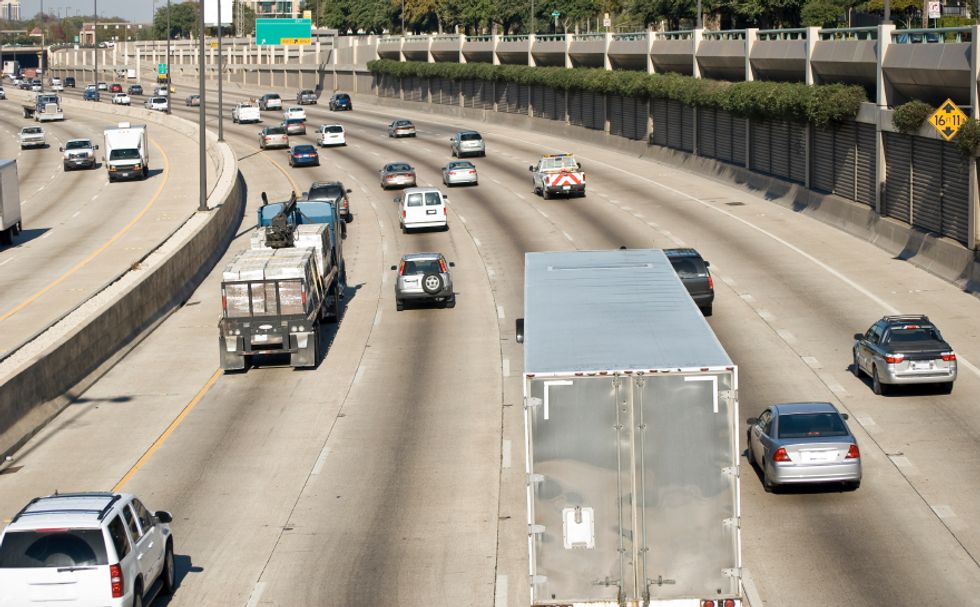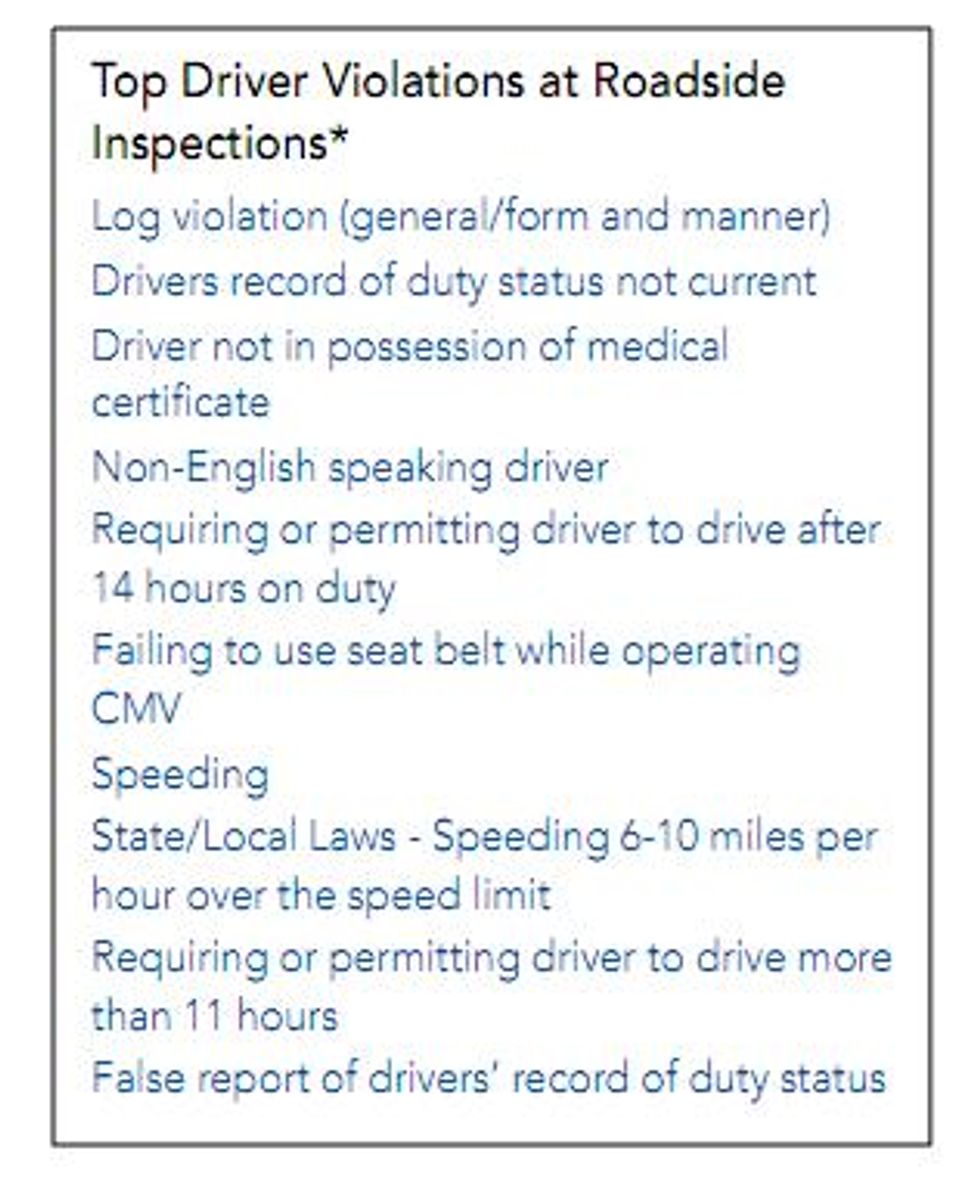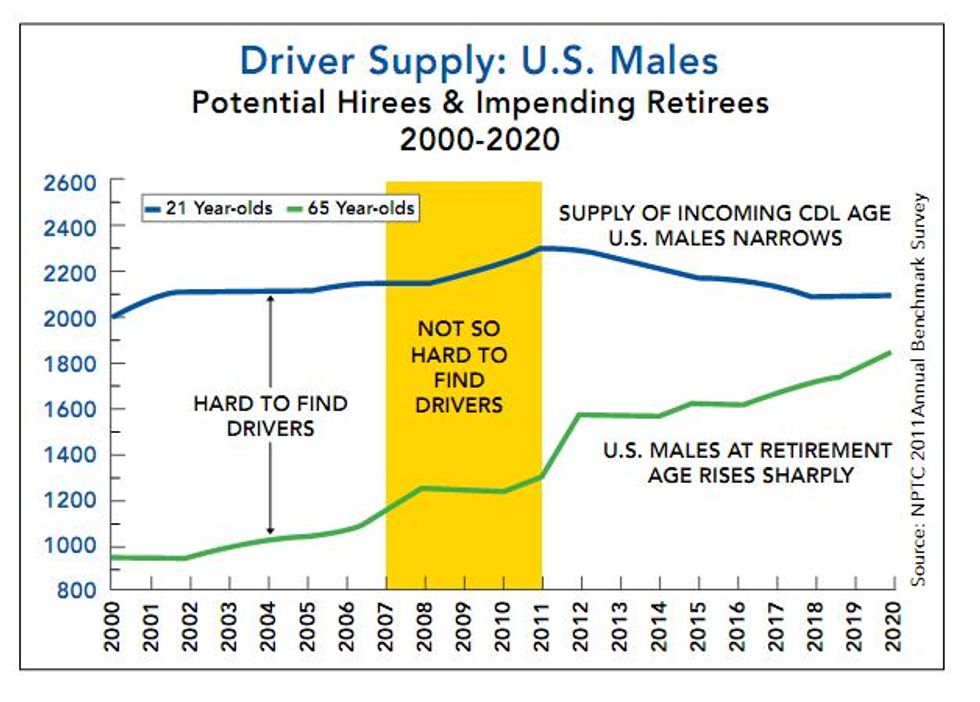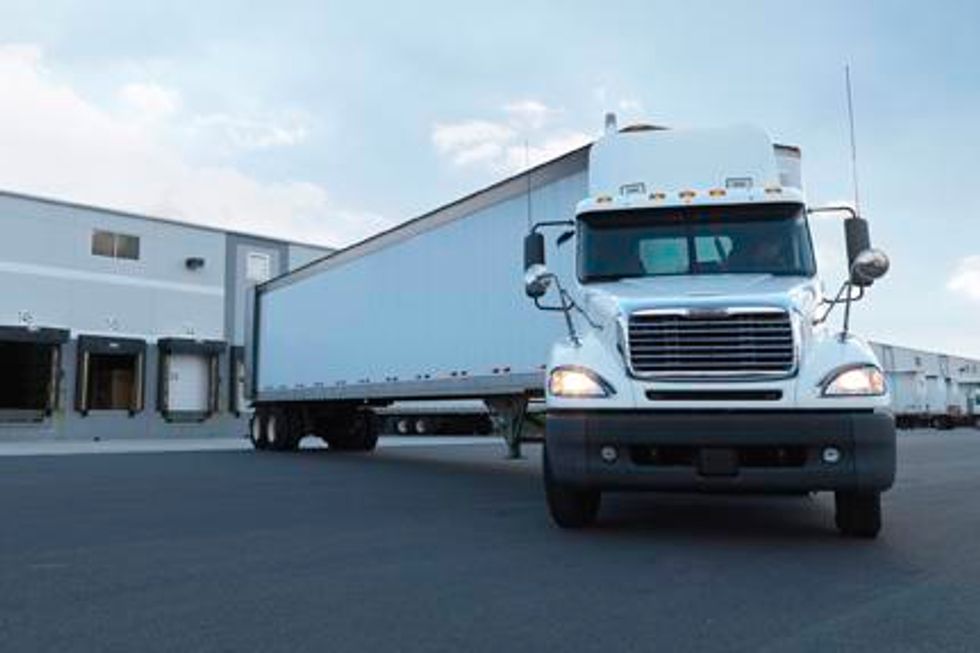Brakes, Tires Top Violations During CVSA Roadcheck
During the Commercial Vehicle Alliance’s 2015 annual Roadcheck inspection event, out-of-service (OOS) rates for commercial vehicles and drivers dropped to record lows. As part of the safety blitz, enforcement officers conducted 69,472 total inspections, 44,989 of which were North American Standard Level 1 Inspections.
In inspections that included drivers, the majority — 95.2 percent — had no out-of-service (OOS) violations. The number placed out of service — 4.8 percent — held steady from 2014. For inspections that included vehicles, 82.5 percent of vehicles had no OOS violations, and 17.5 percent were placed out-of-service — down from the 18.7 percent that were placed out-of-service in 2014.
As part of the event, a special emphasis was placed on proper load securement, which resulted in 2,439 violations. Chuck Pagesy, director of safety for Penske Truck Leasing, said these types of violations and several others are easily preventable.
Under FMCSA regulations, all freight, whether in a dry van, refrigerated trailer or on a flatbed, must be secured, and it is the driver’s responsibility to ensure that it is. Sometimes loads are sealed when drivers pick up trailers, but Pagesy said drivers can ask the shipper to open the load. “If it is loaded, he needs to open the back door and climb in the truck and make sure it is secure,” he said.
“The most important thing a driver can do is his daily pre-trip inspection,” Pagesy said, adding that thorough pre-trip inspections would prevent tire, wheel and lights violations, which are among the top OOS violations issued during Roadcheck. “There is no reason that you should get a violation for tires or lights. Those are things that clearly can be checked on a pre-trip inspection easily.”
Pagesy said it is important that carriers take care of preventive maintenance in a timely manner, which can also reduce the likelihood of a violation. “It is critical they make vehicles available at the appropriate intervals so we can inspect the vehicle. We want to do preventive maintenance rather than react after there has been a breakdown,” he said.
The top OOS violations for drivers came from hours-of-service violations, false logs, and driver disqualifications. In addition, Pagesy stated, “many violations come from drivers not having a drivers license or medical card in his or her possession.
“You’d be surprised at how many drivers don’t have their driver’s license or medical cert card with them,” he said, adding that drivers can take simple steps to minimize violations. “There is no reason for a professional driver to be put out of service. These are all controllable by the driver.”
Pagesy said drivers must keep their electronic or paper logs current and up to date and not simply wait until they have more time to complete their paperwork. “You’re supposed to be current as of your last stop,” he said. “A lot of these guys think they are too busy and try to complete them at the end of the day.”
It is also important to update electronic logs at each stop. “Every time they get in and out of the truck, they update their status. It is a paperless log but you need to go into the system to say whether you’re going on break or going off-duty. The truck doesn’t know what you are doing,” he said.
In addition to OOS violations, officers issued 777 seatbelt violations. “Drivers should always fasten their seatbelt, avoid texting or talking on a cell phone while driving and obtain adequate rest,” Pagesy said.
Although Roadcheck is over, Pagesy said carriers need to maintain their focus on safety and driver behavior year-round. “You need to be prepared all year long because there is always an opportunity to get pulled into a roadside inspection,” he said.
[column]Brake System 27.5%
Brake Adjustment 15.5%
Safe Loading 15.3%
Tires/Wheels 13.9%[/column][column]Lights 12.7%
Suspension 2.1%
Steering 2%
Frame 1.1%[/column][column]Coupling Devices 0.7%
Driveline/Driveshaft 0.6%
Fuel System 0.5%
Exhaust System 0.3%[/column][/column-group]
False Logs 12.6%[/column]
[column]DQ’ed 7.6%
Drugs/Alcohol 2.1%[/column][/column-group]

 The U.S. Department of Transportation’s Federal Motor Carrier Safety Administration has removed the majority of information on motor carriers’ Compliance, Safety, Accountability scores from public view as a result of the latest highway bill—
The U.S. Department of Transportation’s Federal Motor Carrier Safety Administration has removed the majority of information on motor carriers’ Compliance, Safety, Accountability scores from public view as a result of the latest highway bill— This measure was one of several directly related to the trucking industry that was included in the $305 billion highway bill, which was the longest surface transportation bill in more than ten years. The FAST Act provides $227 billion for highways and $61 billion for transit and guarantees funding for transportation programs through 2020. It also creates a new multimodal freight policy and a national freight strategic plan.
This measure was one of several directly related to the trucking industry that was included in the $305 billion highway bill, which was the longest surface transportation bill in more than ten years. The FAST Act provides $227 billion for highways and $61 billion for transit and guarantees funding for transportation programs through 2020. It also creates a new multimodal freight policy and a national freight strategic plan.
 Shippers would do well to be mindful of these key considerations when evaluating a DCC provider:
Shippers would do well to be mindful of these key considerations when evaluating a DCC provider: Compliance Safety Accountability (
Compliance Safety Accountability ( The BASICS are made up of seven areas, with fleets receiving a score for each. They include unsafe driving; fatigued driving; driver fitness; alcohol/drugs; vehicle maintenance; cargo securement; and crash history.
The BASICS are made up of seven areas, with fleets receiving a score for each. They include unsafe driving; fatigued driving; driver fitness; alcohol/drugs; vehicle maintenance; cargo securement; and crash history. Violations found at roadside carry different weights. Knowing the values associated with specific components may help carriers identify areas they want to focus on during pre-trip inspections. For example, flat tires and/or audible air leaks are weighted as an eight, stop lamp violations a six and excessive oil leaks a three.
Violations found at roadside carry different weights. Knowing the values associated with specific components may help carriers identify areas they want to focus on during pre-trip inspections. For example, flat tires and/or audible air leaks are weighted as an eight, stop lamp violations a six and excessive oil leaks a three.  The availability of qualified truck drivers is always a long-term industry concern, but rebounding freight volumes in 2010 have brought the driver shortage issue back to the forefront and numbers continue to rise.
The availability of qualified truck drivers is always a long-term industry concern, but rebounding freight volumes in 2010 have brought the driver shortage issue back to the forefront and numbers continue to rise.  NPTC reported that private fleet owners report retention and turnover rates that are better than their for-hire peers. NPTC members report turnover of 10.6 percent, which is up slightly from the 10 percent reported last year.
NPTC reported that private fleet owners report retention and turnover rates that are better than their for-hire peers. NPTC members report turnover of 10.6 percent, which is up slightly from the 10 percent reported last year. 
 Driver Documentation and Vehicle Maintenance
Driver Documentation and Vehicle Maintenance Safety is Top Priority at Penske Logistics
Safety is Top Priority at Penske Logistics